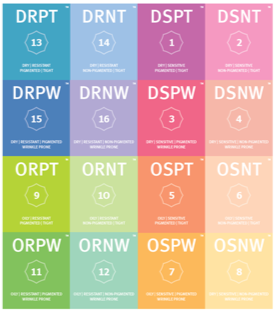In this 5-part series, the world-renowned dermatologist, Dr. Leslie Baumann, will be sharing her extensive skincare expertise. From properly identifying a patient’s skin type to learning about skincare product manufacturing and packaging processes, our readers are sure to learn something new from this informative series.
Daily correct skincare is essential for promoting healthy, youthful skin. As dermatologists, it is our duty to be the smart source for product information and recommendations. However, finding and selecting efficacious skincare products and designing the right regimen for each patient can be daunting tasks. Many dermatologists choose to retail cosmeceuticals to ensure that their patients are purchasing the correct products and are not purchasing counterfeit products online. Making skincare products available to patients not only improves their satisfaction and outcomes, but it also presents a revenue stream that cannot be underestimated. This five-part series will discuss an innovative, customized diagnostic system that was developed to empower physicians and their staff to provide medical advice on skincare in an ethical and scientific manner[1].
While working as a Professor at the University of Miami 1997-2009, I specialized in researching cosmeceuticals. I would spend an average of 45 minutes discussing skincare with patients, and this was not practical. I would recommend mass market brands like Dove, Eucerin, Aveeno and Olay, but would find that patients would not purchase the products or would buy the wrong products. Even when they bought the proper products, they would not use them correctly or in the proper sequence. I realized that there were several issues at play that needed to be addressed:
- Matching patients to the correct products
- Properly layering the products to increase efficacy through ingredient interactions
- Giving the patients written instructions on what, how, when and why to use the products
- Following up with patients and adjusting the regimens monthly as the skin issues improved or changed
- Training the staff to effectively do this for me
It became apparent that a scientific methodology was critical to success. The trust placed in dermatologists by our patients is paramount to successful patient outcomes so I wanted to create an ethical skincare recommendation system that empowered the staff to make scientifically based skincare recommendations to patients. The first step was to find out how patients felt about their dermatologist prescribing skincare products to them.
In 2005, I surveyed the patients in the dermatology clinic at the University of Miami about their attitudes in regard to their doctor recommending and retailing skincare products. I was shocked to learn that 100 percent of them wanted their dermatologist to retail skincare products in the office. Not one patient responded that they did not want their doctor to sell products! They stated the reasons were the desire to make sure they purchased the proper products, convenience, and the desire to get started on the proper products while they were still motivated from seeing the doctor. We began retailing skincare at the University of Miami immediately. We experienced these pitfalls:
- Matching patients to the proper skincare products took too much time
- We had no standardized methodology that the staff could use so we could not delegate this task to staff and know for certain that the patients were getting the correct products for their skin type.
- It took a long time to think about the chemistry of product layering – which product comes first and which ingredients react with which ingredients.
- It took too much time to write down all of the information for patients about what to use, when to use and why to use
Basically, we needed a validated scientific methodology that would empower our staff to educate and engage patients correctly in a way that would improve outcomes. It took a decade of trial and error to come up with an ethical and streamlined approach to give accurate medical advice on skincare. The first step was describing and validating the Baumann Skin Typing System that consisted of 16 Skin Types.[2]
Barriers To Skin Health
There are four main underlying processes that are a barrier to healthy skin:
- Dehydration
- Inflammation
- Dyspigmentation
- Aging
The Baumann Skin Typing System is based on the fact that all patients will have none of these (the healthiest skin type) or a combination of 1 or more of these barriers which results in 16 distinct skin phenotypes known as the 16 Baumann Skin Types.
16 Baumann Skin Types®
The skin types are designated with a four-letter skin type descriptor nomenclature that that describes the patient’s facial skin phenotype. Figure 2. The skin type descriptor letters stand for:
- Oily (O) or Dry (D). Oily is defined as making an adequate or excessive amount of sebum. Dry is defined as having an impaired skin barrier resulting in increased transepidermal water loss.
- Sensitive (S) vs Resistant (R). Sensitive is defined as being susceptible to inflammation in the form of acne, rosacea, stinging or contact/ irritant allergic dermatitis. Resistant skin is much less susceptible to inflammation.
- Pigmented (P) vs Non-pigmented (N). Pigmented is defined as uneven skin color with overactive melanocytes. Nonpigmented is even toned skin with.
- Wrinkle-prone (W) or Tight (T). Wrinkle-prone skin is defined as age 30 or higher or under age 30 with poor lifestyle habits such as excessive sun exposure, tanning bed use or smoking. The wrinkle-prone types need ingredients to help protect and repair the skin from the multiple processes that lead to skin aging.
 Figure 2- Each Baumann Skin Type is designated by a four-letter descriptor and assigned a color and number. Patients tend to remember the number.
Figure 2- Each Baumann Skin Type is designated by a four-letter descriptor and assigned a color and number. Patients tend to remember the number.
Diagnosing the Patient’s Baumann Skin Type
To properly diagnose a patient’s skin type, it is imperative to use a scientifically validated questionnaire that asks historical data. It is more accurate to assign the skin phenotype based on how the skin has reacted in certain situations in the past than it is to rely on how the skin appears at one point in time. I developed the Dynamic Diagnostic Questionnaire (DDQ) to diagnose the Baumann Skin Type and assess the presence of the barriers to skin health at each visit and adjust the regimen recommendation accordingly. The DDQ has been tested and validated[3] on more than 100,000 people of many ethnicities[4], ages 12 and older and both genders worldwide.
Summary
The first step to scientifically customize an efficacious skincare regimen for your patients is to determine their skin type. Over 100 doctors now use the software-based DDQ to diagnose the Baumann Skin Type and improve their skin care recommendation process. Once the DDQ has diagnosed the skin type, the software will automatically generate a corresponding efficacious skincare regimen that can be customized by the doctor.
I’ll be outlining more steps to properly and ethically recommend and retail skincare over this series of five articles. The next article will discuss choosing products for each skin type. Be sure to check back to get all the information. To learn more about my innovative, customized, expert skincare diagnostic system visit STSFranchise.com or feel free to email me at DrB@SkinTypeSolutions.com. You can also follow me on LinkedIn, LeslieBaumannMD.com or Instagram @LeslieBaumannMD to expand your cosmeceutical expertise every day.
[1] Castanedo-Tardan, M. P., & Baumann, L. (2009). Ethics of selling skin care. Clinics in dermatology, 27(4), 355-358.
[2] Baumann, L. (2008). Cosmetic and skin care in dermatology. Fitzpatrick’s Dermatology in General Medicine. 7th ed. New York: McGraw Hill, 1357-2363.
[3] Baumann, Leslie S., et al. “A Validated Questionnaire for Quantifying Skin Oiliness” Journal of Cosmetics, Dermatological Sciences and Applications 4 (2014): 78-84.
[4] Baumann, Leslie. “Validation of a Questionnaire to Diagnose the Baumann Skin Type in All Ethnicities and in Various Geographic Locations” Journal of Cosmetics, Dermatological Sciences and Applications 6 (2016): 34-40.


